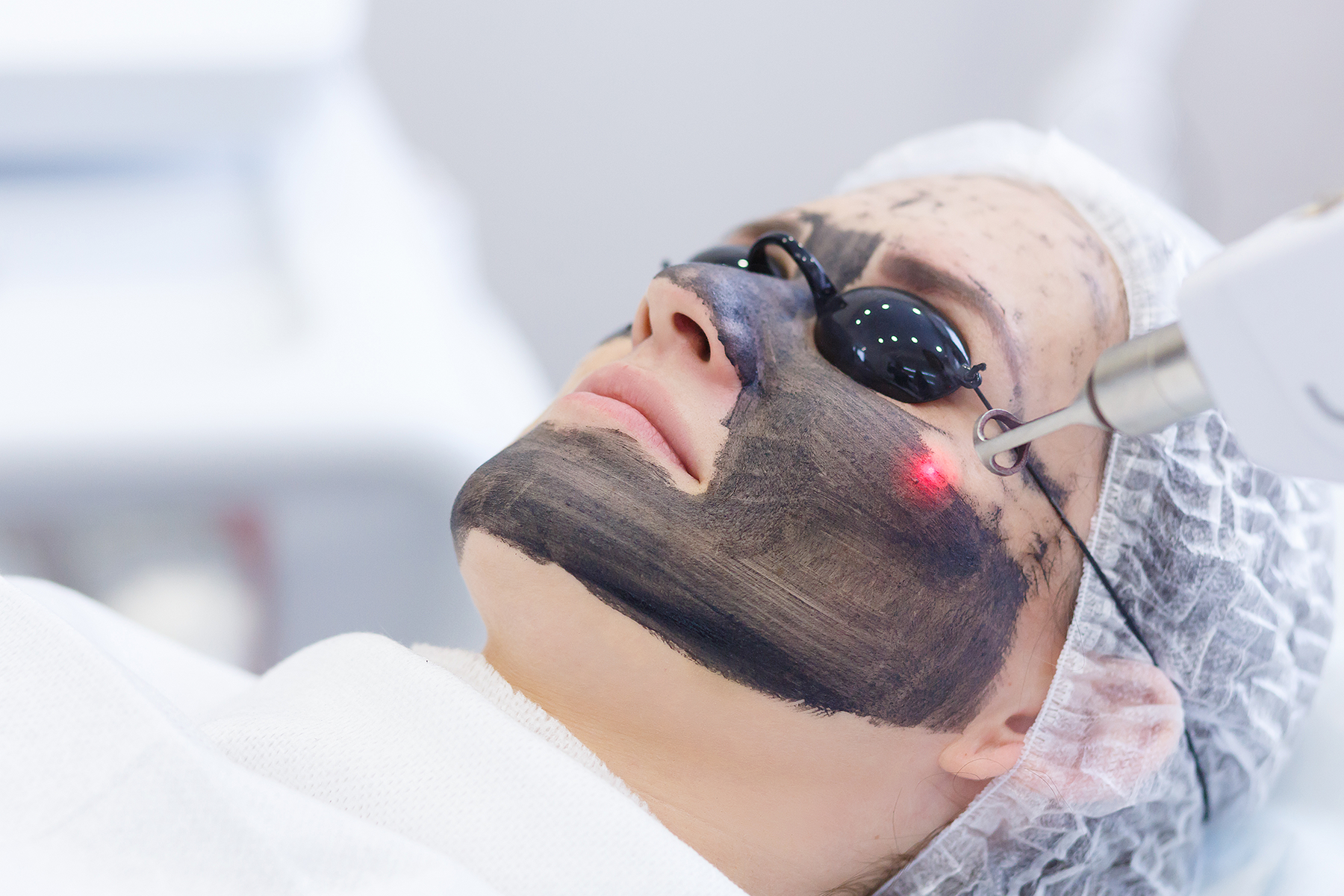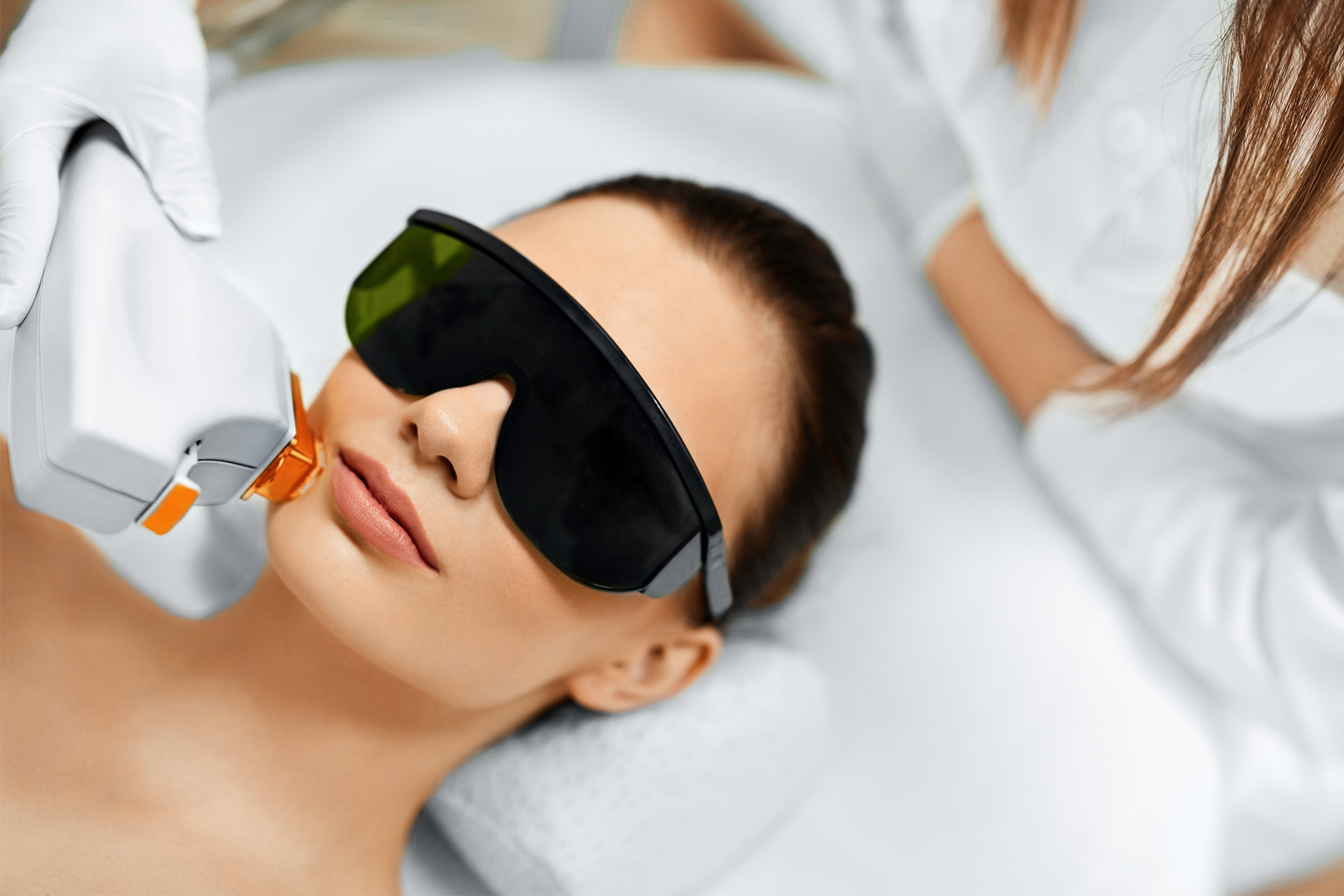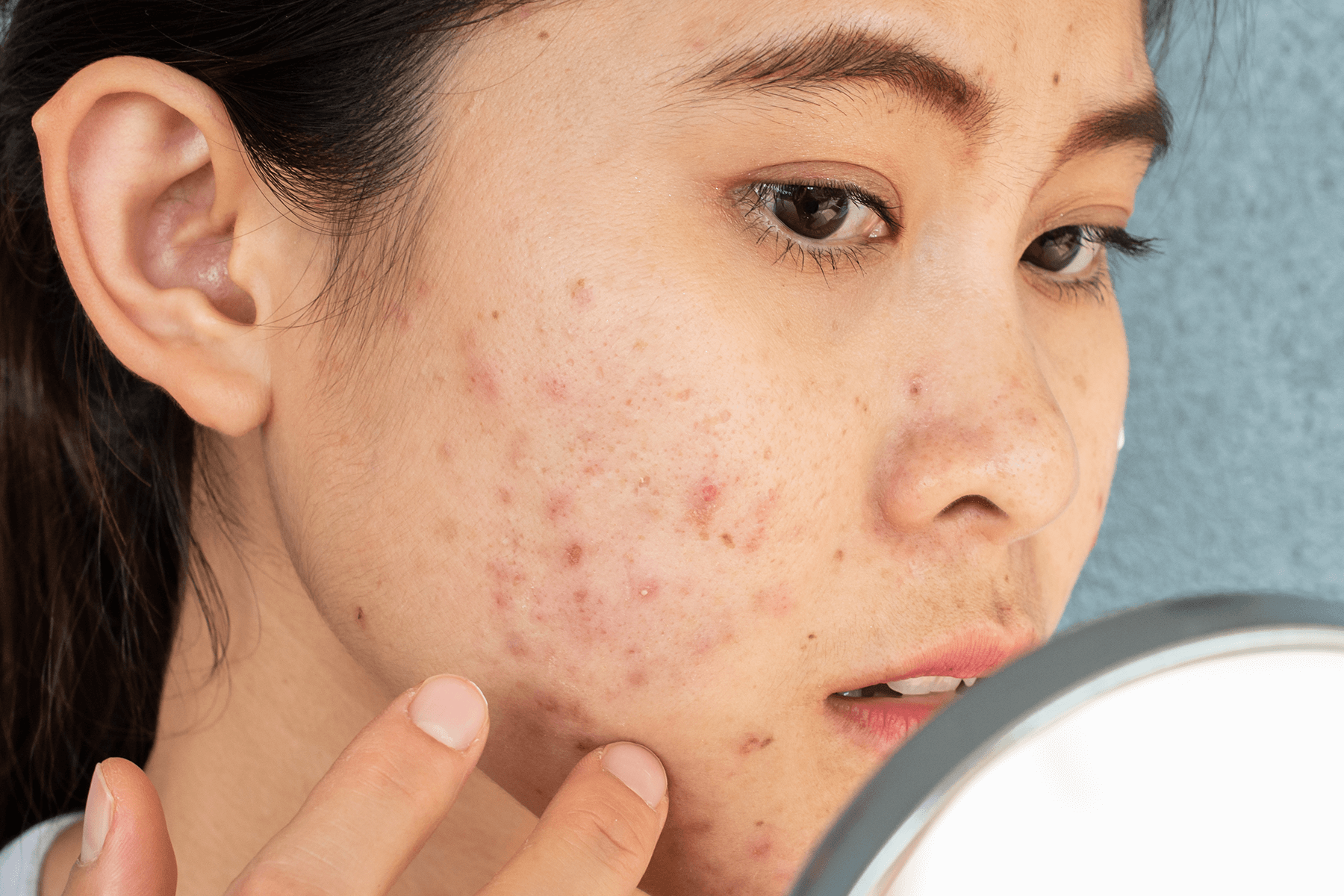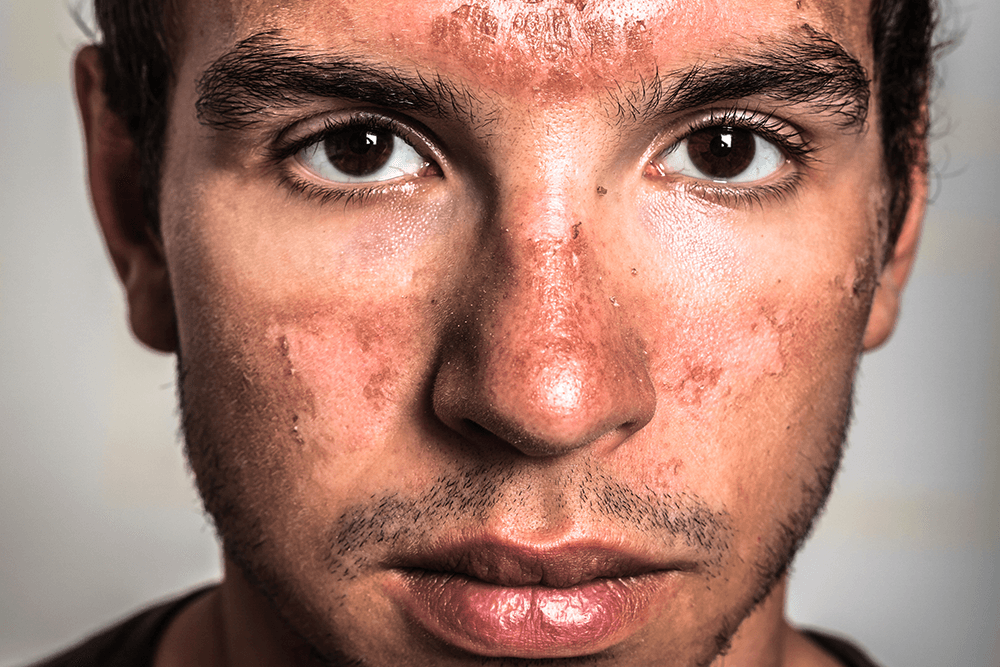The+Source
Around here, we’re (obviously) pretty big fans of chemical peels, and for good reason — they can tackle everything from fine lines and wrinkles to hyperpigmentation, blemishes, and acne scarring, all while promoting cellular turnover. However, some skin concerns require the use of different devices in our dermatology tool kit: lasers.
Lasers are powerful sources of light energy that deliver concentrated pulses of heat to the skin. There are many different kinds of lasers, each of which have their own specific wavelengths and pulse lengths. These determine what they’re best used for in a clinical setting, whether that’s laser skin resurfacing, laser hair removal, tattoo removal, or another form of treatment. The most important thing to know before considering laser therapy is that there is no one laser that can effectively treat all skin concerns, even though many may be marketed that way. As Dr. Gross would say, multi-treatment lasers are “jacks of all trades, but masters of none.”
Instead, Dr. Gross and many of his colleagues around the country prefer to utilize multiple lasers that specifically target individual problems, “cocktailing” their use depending on their patients’ needs. For example, instead of using one laser to get rid of sun damage, wrinkles, and acne scars, use three different devices — one that is the best for sunspots, another that is the gold standard for smoothing wrinkles, and a third that is top of its class for healing acne scars — to address those concerns will deliver much better results.
We know there are so many different laser categories that it can be overwhelming to even consider booking a treatment of any kind. But never fear: we’re here to break down the major types of laser treatments (as well as other forms of light therapy and Dr. Gross’s unique treatment innovations) so you can walk into your next appointment feeling informed and inspired. Keep reading for your go-to guide to laser treatments for skin.
Types of lasers for skin
As populated as the laser market is, every device can be classified as one of just two different categories: non-ablative and ablative. Don’t overthink it — just know that “ablative” is synonymous with “invasive” and thus ablative lasers will require more downtime and post-procedure care than treatment with a non-ablative laser.
Ablative lasers
Ablative technology is a wounding laser that intentionally damages the top layers of skin while targeting the lower layers. That means that the device will literally vaporize the skin you can see, leaving the raw skin underneath exposed. This causes your body to kick its healing response (and thus collagen production) into high gear. The idea is that as the area recovers, it’ll produce healthier-looking skin without the damage — like dark spots, acne scarring, and/or wrinkles — that was visible before treatment. The downside is that this causes long periods of downtime and there is the possibility that ablative lasers could cause more damage than good, especially in the hands of an inexperienced provider.
CO2 lasers
This is the most well-known type of laser across both the ablative and non-ablative categories. Traditional carbon dioxide lasers are very strong, hard to control, and can create too much damage, causing complications, which is why many providers have switched to fractional CO2 laser technology. It uses the same wavelength as a traditional CO2 laser but breaks the light beam into thousands of tiny beams that create a grid-like pattern, delivering targeted columns of precise destruction rather than sweeping damage. The ablative CO2 laser can treat a wide range of concerns, but it’s most commonly used for fighting signs of aging like lines, wrinkles, dark spots, and skin laxity, as well as scarring (including acne scars). Because this is an invasive laser that can be adjusted to varying degrees of depth, prepare for at least a week of serious social downtime.
Erbium lasers
Erbium lasers use a shorter wavelength to target similar skin concerns to CO2, namely lines and wrinkles, dark spots, and scars. Erbium lasers are strongly absorbed by water, one of the primary components of skin cells. When the light spreads across the face, it heats the water, wounding the skin and creating damage that jumpstarts your body’s healing response. Treatment with an erbium laser will take at least five days of recovery.
Non-ablative lasers
This is Dr. Gross’s preferred category of laser treatment; non-ablative lasers can work deep within the skin to correct everything from texture issues (like fine lines and wrinkles, acne scarring) to pigmentation concerns and laxity without damaging the skin’s surface. As a result, most non-ablative treatments require very little downtime. In fact, some treatments are so gentle that you can walk right out of your provider’s practice and continue on with your life as usual. However, due to that gentle nature, non-ablative treatment typically requires multiple sessions — often packages of six — to achieve the desired results. That’s not a bad thing: Slow and steady wins the race!
CO2 lasers
Fractional CO2 lasers can also be used for non-ablative treatment to more slowly and safely address the same concerns as their ablative counterparts, namely stimulating collagen repair and cellular turnover to correct the appearance of fine lines, wrinkles, dark spots, and skin laxity. Because non-ablative CO2 lasers target underlying lasers of skin without damaging the surface, you’ll see minimal downtime. Most people are able to return to their regular activities right away, but makeup should be avoided for the first 48 hours after treatment, so if that sounds unacceptable to you, consider booking your treatment before a long weekend to err on the side of caution.
Pulsed-dye lasers
This type of device works by targeting hemoglobin, the protein in red blood cells that gives them their color. As a result, pulsed-dye lasers can seek and destroy blue and red veins (including those that contribute to facial redness, like broken blood vessels), spider veins, vascular lesions, and birthmarks like port wine stains. Pulsed-dye lasers are known to be so mild that they’re frequently used to improve the look of port wine stains on infants, so there’s zero downtime to worry about.
Nd:YAG and alexandrite lasers
These two laser types use crystals (Yttrium Aluminum Garnet and Alexandrite, respectively) as the medium that produces the laser beam. They are both quite effective at targeting brown pigment (melanin) and thus are often used interchangeably to treat skin concerns like sunspots and hyperpigmentation. YAG and Alexandrite lasers can also be used for laser hair removal and tattoo removal, and Nd:YAG, in particular, is effective at delivering long-lasting stimulation of elastin production, the protein responsible for skin’s resilience and (perhaps obviously) elasticity. These lasers both offer minimal downtime, though tattoo removal patients will likely observe some scabbing, which is totally normal. However, it’s important to note that because these devices are designed to target melanin, they’re not safe for use on deeper skin tones.
Other forms of light therapy:
LED therapy
Yes, lasers use light, but they also emit heat and UV. LED therapy does neither and uses light-emitting diodes in varying wavelengths of light (colors!) to help regenerate skin and battle breakouts. The most popular colors used in LED therapy are red, which addresses signs of aging, and blue, which helps treat acne. In addition to finding this treatment in your provider’s office, you can experience the treatment from the comfort of your couch with at-home LED devices. Because there’s no heat, there’s zero damage, discomfort, or downtime, making it a great treatment for everyday maintenance.
IPL (Intense pulsed light)
Again, this might sound like a laser, but lasers emit one focused wavelength of light towards your skin, while IPL delivers multiple, scattered wavelengths to help fight hyperpigmentation and even remove hair. There may be minor discomfort — a lot of people liken the sensation of IPL to being snapped with a rubber band — and potentially minor downtime caused by redness, swelling, and sensitivity. However, don’t expect to be out of commission for more than a few hours.
3D laser treatment
This customized cocktail of pulsed-dye laser, IPL, and an Nd:YAG laser is a signature treatment of Dr. Gross. During this treatment, facial redness, brown spots, fine lines, wrinkles, and skin laxity are all addressed by the individual technologies that best do so, delivering firmer, smoother, more radiant skin after multiple treatments with minimal discomfort and zero downtime. In New York City or the Hamptons? Contact Dr. Dennis Gross Dermatology to learn how 3D laser — or any of our other laser offerings — can help you reach your complexion goals.
Discover Dr. Dennis Gross Skincare for All Your Skincare Needs
Discover multi-tasking formulations at Dr. Dennis Gross Skincare and simplify your skincare. For more skincare tips from the experts at Dr. Dennis Gross, check out our blog’s newest content today. Shop the collection of Dr. Dennis Gross bestselling skincare backed by dermatologists.






